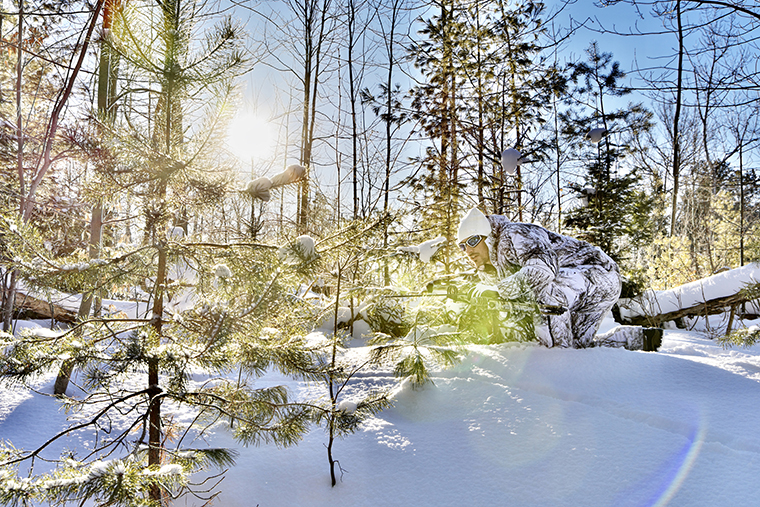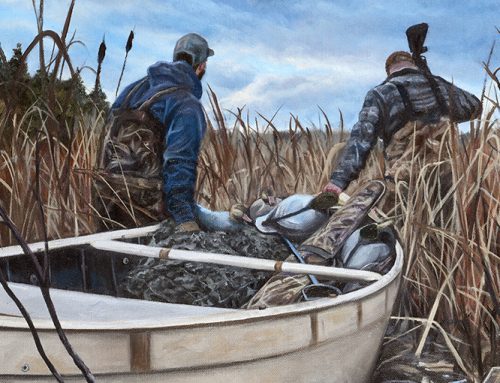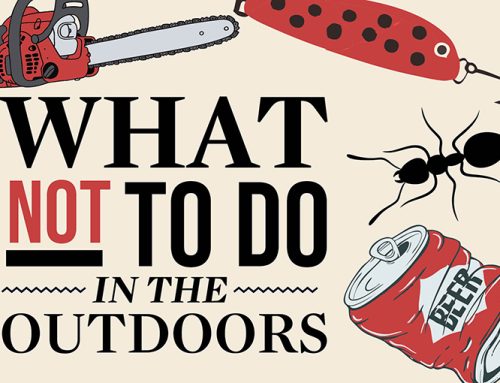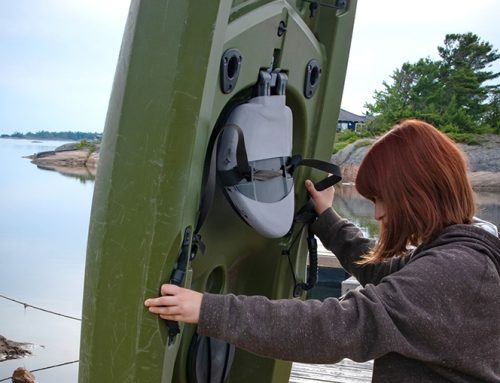
Of all the ways to hunt deer, nothing is more challenging than putting the stalk on them. Whitetail deer are built to sense danger on the ground, and have developed incredible senses of smell, sight, and hearing to avoid predators.
So how can you win at the sneaking game?
It’s not the easiest thing to master. But, with a little preparation and some understanding of how deer work, you can sneak up on that big buck this fall.
Early efforts
My early efforts at stalking deer were not successful. Mostly I would spook them long before I could see them, and would listen helplessly as they crashed off through the bush, usually snorting and wheezing as they went.
My first successful stalk took place many years ago near Nestor Falls in northwestern Ontario. It was early November and the landscape was crisp but snowless. I’d been working my way along a ridge, trying to keep the wind in my face and not make much noise. At one point, I stopped, and could hear the sound of something walking in the leaves below. I first assumed it was another hunter, but there was something a bit too random about it. Scanning down the ridge, I saw a flash of brown through the trees. It was a doe, head down, feeding on some grass. My heart rate started to quicken. Soon I could see more movement and another doe lifted its head. My heart began to beat so loudly I could hear the valves clicking. Then, about 100 yards away, a buck stepped out. It was a beautiful 8-pointer, with bone-white tines.
Looking back
It’s interesting to look back at this experience from 30 years on. I now know that buck fever had set in, and when I shot at that animal my arms were trembling. It stood and looked at me as I levered another shell in my old .30-30. The second shot also missed badly, and the buck ran off unscathed. I learned a lesson that day about taking a shot only when calm and steady. But, I did discover that I could creep up on deer on their home turf.
Certain conditions make stalking a little easier. Rain, fog, and wet snow favour the still-hunter and are difficult for deer to negotiate. Although most hunters don’t like rain, it really does knock down scent and disguises your footfall. Oddly enough, bucks will often be out and about in rain, especially during the pre-rut and rut periods of November. Wet snow also obscures scent, and puts a nice layer of prime tracking material down.
I can remember getting on a smoking-hot track of a buck a few years back, and got so close I could actually smell the animal. The bush was kind of thick, so I couldn’t actually see him. A short blow in a grunt tube was all it took for him to stick his neck out of the bush, not 50 feet from me. The shot was true and he didn’t go far.
Scent and noise
When you’re stalking, the two biggest deal breakers are scent and noise.
Keeping a watch on the wind is key, although it can be tricky to keep track of it in the bush. Having a little piece of yarn or thread on your rifle or bow can help. I’ve also tried commercial products that use a visible spray of light-coloured dust to show wind direction. For me, feeling the breeze in my face is the best marker and surest clue I’m not going to be busted by scent. Wearing scent-reducing garments doesn’t hurt either, but the physical process of stalking through the bush inevitably creates perspiration. Deer don’t often ignore the scent of human sweat.
Being quiet when stalking is very tricky, as most humans in the woods are like bulls in a china shop. Being mindful of where you step helps, and wearing footwear with softer soles can help you feel the ground — and potential noisemakers like sticks — a bit more easily.
When you stalk, stop frequently and let your eyes take in the surroundings. Most of us spend a lot of time looking down when we walk through the woods, in order not to trip or step in a hole. This is good for safety, but not so good when you need to see an animal. Keep your eyes forward as much as possible.
Should you be on a track, whether it be in mud or snow, be aware of what the track is telling you. If the animal has been running, pick up the pace. If it’s clearly walking, or even meandering from bush to bush while feeding, slow down. You will not likely spot a full animal; more likely you’ll notice a horizontal line or dark shape. Ear and tail flicks give many bucks away as well. I’ve even caught a glint of tine from time to time. If you see a full deer walk into the open, you’re in luck.
Be ready
Finally, when you are putting the sneak on deer, you need to be ready to shoot at any time. This generally means holding your rifle in a way that you can fire without a lot of mucking about. A gun strap is comfortable, but if it’s not designed to allow for swift removal, don’t use it. Gun straps have cost me animals when they’ve caught on my clothing. These days I carry my rifle with both hands, and rarely shoulder it. It can be a little tiring, but you will be ready if a deer appears in front of you.

Putting the sneak on a buck and successfully harvesting it is the most challenging game of all. Master the technique, and you’ll fill your buck tag with regularity.
Senior Editor Gord Ellis is a journalist, radio broadcaster, photographer, and professional angler based in Thunder Bay.
Originally published in the Nov.-Dec. 2018 issue of Ontario OUT of DOORS magazine.






Excellent read. Will be taking on my first buck this fall and I am currently sponging in all the info I can!! Thank you